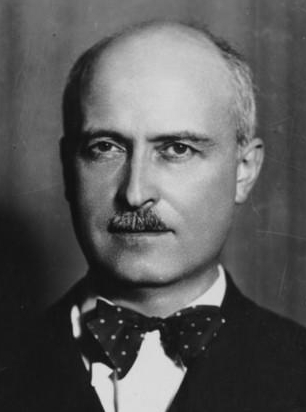|
Irena Grafenauer
Irena Grafenauer (born 19 June 1957 in Ljubljana, Slovenia) is a Slovenian flute player and soloist, a pupil of Boris Čampa, Karlheinz Zöller and Aurèle Nicolet. Irena Grafenauer born to father Stanko Grafenauer, a geologist, and to mother Magdalena Grafenauer. She started her musical education at the age of 8. After graduating from the Academy of Music (Ljubljana), Academy of Music in Ljubljana in 1974, she continued her studies with Karlheinz Zöller and Aurèle Nicolet. She won First Prize in three international competitions: in Belgrade (1974), Geneva (1978) and Munich (1979). From 1977 to 1987 she was principal flautist with the Bavarian Radio Symphony Orchestra under Rafael Kubelik and Colin Davis. On October 1987 she was appointed Professor at the Salzburg Mozarteum. She has successfully toured most European countries, the United States, Japan, and Australia as a soloist. She has performed regularly at Gidon Kremer’s Lockenhaus Chamber Music Festival, Lockenhaus Festiv ... [...More Info...] [...Related Items...] OR: [Wikipedia] [Google] [Baidu] |
Philips Records
Philips Records is a record label founded by the Dutch electronics company Philips. It was founded as Philips Phonographische Industrie in 1950. In 1946, Philips acquired the company which pressed records for British Decca's Dutch outlet in Amsterdam. History The record label originated as "Philips Phonographische Industrie" (PPI) in June 1950 when it began issuing classical music recordings. Recordings were also made of popular artists of multiple nationalities and of classical artists from Germany, France and the Netherlands. Launched under the slogan "Records of the Century" (referring to Philips Industries' UK Head Office at Century House, W1), the first releases in Britain appeared in January 1953 on 10" 78 rpm discs, with LPs appearing in July 1954. Philips also distributed recordings made by the United States Columbia Records (which at the time was a unit of CBS) in the UK and on the European continent. After the separation of the English Columbia label (owned by EMI) ... [...More Info...] [...Related Items...] OR: [Wikipedia] [Google] [Baidu] |
University Of Ljubljana
The University of Ljubljana ( sl, Univerza v Ljubljani, , la, Universitas Labacensis), often referred to as UL, is the oldest and largest university in Slovenia. It has approximately 39,000 enrolled students. History Beginnings Although certain academies (notably of philosophy and theology) were established as Jesuit higher education in what is now Slovenia as early as the seventeenth century, the first university was founded in 1810 under the ''Écoles centrales'' of the French imperial administration of the Illyrian provinces. The chancellor of the university in Ljubljana during the French period was Joseph Walland (a.k.a. , 1763–1834), born in Upper Carniola. That university was disbanded in 1813, when Austria regained territorial control and reestablished the Imperial Royal Lyceum of Ljubljana as a higher-education institution. Quest for a national university During the second half of the 19th century, several political claims for the establishment of a Slovene-language u ... [...More Info...] [...Related Items...] OR: [Wikipedia] [Google] [Baidu] |
Jana (magazine)
Jana may refer to: Entertainment * ''Jana'' (film), a 2004 Tamil film by Shaji Kailas * Jana (singer) (born 1974), Serbian singer * Jana (Native American singer), née Jana Mashonee * ''Jana of the Jungle'', animated series created by Doug Wildey for Hanna-Barbera Productions * Jana, a character in the television series ''Containment'' * "Jana", a single by Killing Joke from the album ''Pandemonium'' Other * Jana (given name), a given name (and list of people with the given name) * Jana (brand), a brand of drinks * ''Jana'' (moth), a genus of moths * Jana (Vedic period), a term for tribes in ancient India * Jana Bhava (''knowledge''), a sutra and Putanjali's discourse related to the basic tenets of Yoga and is wisdom * Jamahiriya News Agency or JANA, Libya's state news agency (1964–2011) * Diana (mythology), also called Jana, the ancient Roman goddess of the moon, the hunt, and chastity See also * *Janna (other) *Janata (other) *Lok (other), ''peo ... [...More Info...] [...Related Items...] OR: [Wikipedia] [Google] [Baidu] |
Slovene Woman Of The Year
Slovene or Slovenian may refer to: * Something of, from, or related to Slovenia, a country in Central Europe * Slovene language, a South Slavic language mainly spoken in Slovenia * Slovenes, an ethno-linguistic group mainly living in Slovenia * Slavic peoples, an Indo-European ethno-linguistic group * Ilmen Slavs The Novgorod Slavs, Ilmen Slavs (russian: Ильменские слове́не, ''Il'menskiye slovene''), or Slovenes (not to be confused with the Slovenian Slovenes) were the northernmost tribe of the Early Slavs, and inhabited the shores of L ..., the northernmost tribe of the Early East Slavs {{Disambiguation Language and nationality disambiguation pages ... [...More Info...] [...Related Items...] OR: [Wikipedia] [Google] [Baidu] |
Bone Marrow Transplantation
Hematopoietic stem-cell transplantation (HSCT) is the transplantation of multipotent hematopoietic stem cells, usually derived from bone marrow, peripheral blood, or umbilical cord blood in order to replicate inside of a patient and to produce additional normal blood cells. It may be autologous (the patient's own stem cells are used), allogeneic (the stem cells come from a donor) or syngeneic (from an identical twin). It is most often performed for patients with certain cancers of the blood or bone marrow, such as multiple myeloma or leukemia. In these cases, the recipient's immune system is usually destroyed with radiation or chemotherapy before the transplantation. Infection and graft-versus-host disease are major complications of allogeneic HSCT. HSCT remains a dangerous procedure with many possible complications; it is reserved for patients with life-threatening diseases. As survival following the procedure has increased, its use has expanded beyond cancer to autoimm ... [...More Info...] [...Related Items...] OR: [Wikipedia] [Google] [Baidu] |
Chronic Myeloid Leukemia
Chronic myelogenous leukemia (CML), also known as chronic myeloid leukemia, is a cancer of the white blood cells. It is a form of leukemia characterized by the increased and unregulated growth of myeloid cells in the bone marrow and the accumulation of these cells in the blood. CML is a clonal bone marrow stem cell disorder in which a proliferation of mature granulocytes (neutrophils, eosinophils and basophils) and their precursors is found. It is a type of myeloproliferative neoplasm associated with a characteristic chromosomal translocation called the Philadelphia chromosome. CML is largely treated with targeted drugs called tyrosine-kinase inhibitors (TKIs) which have led to dramatically improved long-term survival rates since 2001. These drugs have revolutionized treatment of this disease and allow most patients to have a good quality of life when compared to the former chemotherapy drugs. In Western countries, CML accounts for 15–25% of all adult leukemias and 14% of leuke ... [...More Info...] [...Related Items...] OR: [Wikipedia] [Google] [Baidu] |
Janez Drnovšek
Janez Drnovšek (; 17 May 1950 – 23 February 2008) was a Slovenian liberal politician, President of the Presidency of Yugoslavia (1989–1990), Prime Minister of Slovenia (1992–2002, with a short break in 2000) and President of Slovenia (2002–2007). Youth and early career Drnovšek was born in Celje and was raised in the small town of Kisovec in the Municipality of Zagorje ob Savi, where his father Viktor (1925–2005) was the local mine chief and his mother Silva (1921–1976) was a homemaker. Drnovšek graduated from the University of Ljubljana with a degree in economics in 1973. Meanwhile, he worked as an intern at a Le Havre bank. In 1975, at the age of 25, he became chief financial officer at SGP Beton Zagorje, a construction company. Two years later he became, for one year, an economic adviser at the Yugoslav embassy in Cairo. He defended his master's thesis in 1981, and in 1986 he defended his dissertation at the Faculty of Economics and Business at the Universit ... [...More Info...] [...Related Items...] OR: [Wikipedia] [Google] [Baidu] |
Salzburg
Salzburg (, ; literally "Salt-Castle"; bar, Soizbuag, label=Bavarian language, Austro-Bavarian) is the List of cities and towns in Austria, fourth-largest city in Austria. In 2020, it had a population of 156,872. The town is on the site of the Roman settlement of ''Iuvavum''. Salzburg was founded as an episcopal see in 696 and became a Prince-Archbishopric of Salzburg, seat of the archbishop in 798. Its main sources of income were salt extraction, trade, and gold mining. The fortress of Hohensalzburg Fortress, Hohensalzburg, one of the largest medieval fortresses in Europe, dates from the 11th century. In the 17th century, Salzburg became a center of the Counter-Reformation, with monasteries and numerous Baroque churches built. Historic Centre of the City of Salzburg, Salzburg's historic center (German language, German: ''Altstadt'') is renowned for its Baroque architecture and is one of the best-preserved city centers north of the Alps. The historic center was enlisted as a UN ... [...More Info...] [...Related Items...] OR: [Wikipedia] [Google] [Baidu] |
Mozarteum
Mozarteum University Salzburg (German: ''Universität Mozarteum Salzburg'') is one of three affiliated but separate (it is actually a state university) entities under the “Mozarteum” moniker in Salzburg municipality; the International Mozarteum Foundation and the Mozarteum Orchestra Salzburg are the other two. It specializes in music, the dramatic arts, and to a lesser degree graphic arts. Like its affiliates it was established in honour of Salzburg-born musician Wolfgang Amadeus Mozart. History and clarification In 1841, Mozart's widow Constanze Weber Mozart founded the first of the “Mozarteum” entities: the “Cathedral Music Association and Mozarteum,” whose mission was the “refinement of musical taste with regard to sacred music and concerts.” The association operated as predecessor to the Mozarteum Orchestra Salzburg through the 19th century and was at the heart of the city’s musical life, offering concerts and related activities. It assumed its present ... [...More Info...] [...Related Items...] OR: [Wikipedia] [Google] [Baidu] |
Albert Roussel
Albert Charles Paul Marie Roussel (; 5 April 1869 – 23 August 1937) was a French composer. He spent seven years as a midshipman, turned to music as an adult, and became one of the most prominent French composers of the interwar period. His early works were strongly influenced by the impressionism of Debussy and Ravel, while he later turned toward neoclassicism. Biography Born in Tourcoing ( Nord), Roussel's earliest interest was not in music but mathematics. He spent time in the French Navy, and in 1889 and 1890, he served on the crew of the frigate ''Iphigénie'' and spent several years in southern Vietnam. These travels affected him artistically, as many of his musical works would reflect his interest in far-off, exotic places. After resigning from the Navy in 1894, he began to study harmony in Roubaix, first with Julien Koszul (grandfather of composer Henri Dutilleux), who encouraged him to pursue his formation in Paris with Eugène Gigout; Roussel then continued ... [...More Info...] [...Related Items...] OR: [Wikipedia] [Google] [Baidu] |
Jacques Ibert
Jacques François Antoine Marie Ibert (15 August 1890 – 5 February 1962) was a French composer of classical music. Having studied music from an early age, he studied at the Paris Conservatoire and won its top prize, the Prix de Rome at his first attempt, despite studies interrupted by his service in World War I. Ibert pursued a successful composing career, writing (sometimes in collaboration with other composers) seven operas, five ballets, incidental music for plays and films, works for piano solo, choral works, and chamber music. He is probably best remembered for his orchestral works including ''Divertissement'' (1930) and ''Escales'' (1922). As a composer, Ibert did not attach himself to any of the prevalent genres of music of his time, and has been described as an eclectic. This is seen even in his best-known pieces: ''Divertissement'' for small orchestra is lighthearted, even frivolous, and ''Escales'' (1922) is a ripely romantic work for large orchestra. In tandem with h ... [...More Info...] [...Related Items...] OR: [Wikipedia] [Google] [Baidu] |




